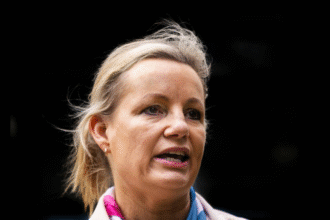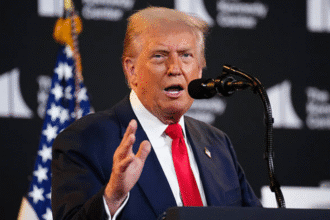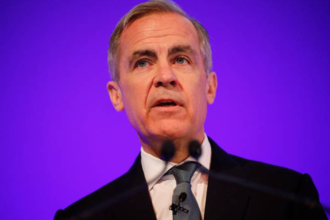Following a brief and well-reported break, the Australian conservative coalition has formally come together in a significant change for Australian politics. After both sides settled important policy differences, the long-standing partnership between the Liberal and National parties, the foundation of the conservative movement in Australia, was rebuilt. Along with indicating a strategic change in opposition leadership, this fresh cooperation prepares the ground for a more organized and action-oriented challenge against the ruling Labor Party.
Though the split was brief, its influence was notable since it highlighted internal conflicts, particularly related to climate, energy, and regional policies. Nonetheless, the readiness of both leaders to participate in honest communication and compromise points to a new phase of coalition unity and goal orientation. Now more aligned and driven to act as a potent political alternative, the Australian conservative coalition reflects.s
Why did the coalition of Conservatives in Australia split?
Many Australians were surprised by the coalition’s fall apart. For decades, conservative government has been based on the fundamental link between the Liberals and the Nationals. Still, over time, the two sides’ tensions had been rising. Deep divides resulted from issues including regional financing priorities, nuclear energy’s place, and climate policy.
Declaring the break publicly, Nationals leader David Littleproud said the two parties couldn’t agree on several significant policy issues. He underlined that although both sides shared similar principles, they couldn’t agree on how to properly apply such ideals.
The statement underlined the difficulties in keeping a coalition that had to balance regional and urban agendas. While the Liberals serve suburban and urban people, the Nationals prioritize the needs of rural areas. Particularly concerning infrastructure, energy, and environmental control, these constituents can have divergent requirements and expectations. Read another article on Australia Energy Shift
How did the Coalition Reunited?
The process of reconciliation was remarkably quick. Sussan Ley, a liberal, commended Littleproud for addressing the conversations with professionalism and mutual respect. Ley said the two sides were dedicated to establishing common ground and restoring confidence for the good of every Australian.
“We had honest, thoughtful conversations that allowed us to recognise what we have always known — we are stronger together, and we must present a united front to the Australian people,” Ley said.
Littleproud agreed with that. ” Strong resistance makes our democracy stronger. This Australian conservative coalition is therefore important not only for us but also for every Australian who wishes for greater representation.
Together, they revealed a new shadow cabinet with members of both parties, therefore signifying their fresh alliance and shared leadership obligations. While honoring each party’s particular identity and values, this cabinet is meant to offer a consistent voice on national problems.
Which Key Policy Agreements Still Need Work?
Energy policy was among the most divisive topics, causing the gap. The coalition had promised earlier to construct seven nuclear power stations around Australia. Both inside and outside the coalition, this idea drew opposition, especially from groups worried about environmental effects and safety.
Both sides have decided to shelve the nuclear plant building project as part of the reunion. Rather, they will now jointly fight for removing the national ban on nuclear energy, therefore paving the path for future exploration and technologies free from immediate infrastructure projects.
Apart from energy, the Australian conservative coalition has decided to give initiatives helping regional areas top priority. This includes large expenditures in infrastructure projects meant to raise access to healthcare, transportation, and education in rural communities.
Improving digital connection in far-off areas is another common objective. For businesses and institutions in less developed areas of the nation, specifically, faster internet speeds and better cell coverage are vital for economic growth and quality of life.
Two further pressing issues are food security and cost. Aiming to cut prices and guarantee that regional consumers have access to a larger spectrum of items, the coalition wants to boost rivalry in the grocery sector. Read another article on Australia Easter Drownings
Politically, what does Reunification Mean?
For opposition politics, the reunion of the Australian conservative coalition represents a turning point. Following a dismal federal election, the coalition’s underperformance led to calls for strategic review and leadership changes. The choice of Sussan Ley as the next Liberal leader marks a turn toward centrist ideas meant to appeal to disenchanted moderate voters.
For the Nationals, the temporary distance provided a chance to highlight regional issues and show their independence. The fact that the parties are back together makes it quite evident that the Nationals used the division to negotiate improved representation and more power inside the alliance.
This deepens cooperation helps the coalition to be a more balanced and ready opposing force. It also prepares the ground for a possible comeback in the next federal election, when public confidence will be rebuilt, mostly depending on unity and a well-defined policy agenda.
Was the split a computed political movement?
Some political commentators think the split was more of a calculated move than a total collapse. The Nationals cleared room to emphasize their unique agenda and appeal to their base by withdrawing. This enabled them to go back to the bargaining table speaking more powerfully.
Having a cooperation going back to the 1940s, both sides have a long history of working together. Often, either from policy differences or election results, the coalition has split and then rebuilt multiple times throughout the years. Still, every time, the underlying mutual advantage of togetherness has pulled them back together.
One expert put it: “Neither party can hope to run without the other. That reality guarantees that they will always find a road back, even if they may disagree.
Future directions for the Australiana Conservative Coalition
Presenting a thorough and convincing substitute for the Albanese administration comes next once the Australian conservative coalition is back in work. Both sides have assured us that more policies—especially those concerning climate commitments, net zero targets, and economic recovery—are under development.
Ley and Littleproud reassured the public that forthcoming debates will build a forward-looking policy framework even if they refrain from offering specifics during their press conference. These ideas are supposed to represent the principles of the coalition and handle Australia’s most urgent issues.
The coalition will also give rebuilding voter confidence a priority in the next months. Reconnecting with grassroots supporters, moderates, and undecided voters is imperative following the recent election setback. Their outreach plan calls for town halls, regional visits, and policy forums already.
Finally
The comeback of the Australian conservative coalition highlights the need for harmony in political leadership. Overcoming internal conflicts and rebuilding their partnership, the Liberals and Nationals have demonstrated a dedication to public service, strategic planning, and cooperation.
Their goal will be to keep this togetherness, live up to expectations, and persuade Australians that they are prepared to lead once more as they get ready to battle the next election. Aiming to make its presence felt, the Australian conservative coalition is back under clearer command and a fresh sense of purpose.








